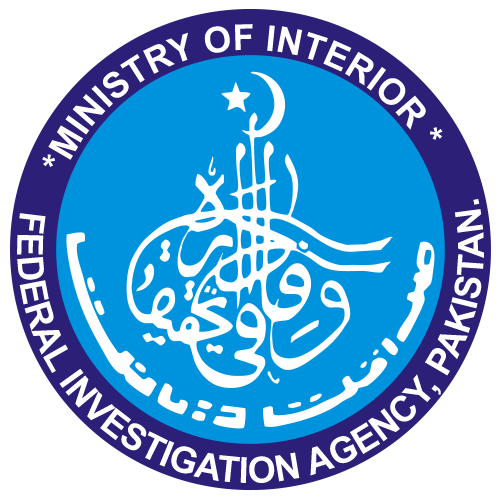UNESCO – 6 World Heritage Sites in Pakistan
A UNESCO site or World Heritage site is a place of cultural or natural significance that is to be protected and preserved. Established in 1972, the UNESCO World Heritage Convention describes sites based on 10 criteria. Criteria 1 through 6 is cultural, whereas 7 through 10 are natural. Cultural heritage can include inscriptions, archaeological sites, sculptures, and buildings. Natural features can vary from geological and physiographical formations to natural habitats.
Pakistan and by extension, the whole of the Indian Subcontinent, is a historical goldmine. History from the neolithic era, the time of the Indus Civilization, the Mughals, Buddhists, to even Alexander the Great is all found in Pakistan. Currently, there are a total of 6 UNESCO inscribed World Heritage Sites in Pakistan with 26 on the tentative list awaiting certification. Of the sites in the tentative list, some notable ones are below:
- Badshahi Mosque in Lahore, Punjab
- Shah Jahan Mosque in Thatta, Sindh
- Harappa in Punjab
- The Salt Range and Khewra Salt Mine in Punjab
- Rani Kot Fort in Dadu, Sindh
Mohenjo-Daro
| Location | Larkana, Sindh |
| Type | Settlement |
| Criteria | ii, iii (Cultural) |
| Culture | Indus Vally Civilization |
| UNESCO Inscription | 1980 |
| Area | 620 acre |
| Founded | 26th-25th century BCE |
| Abandoned | 19th century BCE |
Mohenjo-Daro or “ Mound of the Dead”, located in the province of Sindh is the largest settlement of the ancient Indus Valley Civilization. After being abandoned sometime in the 19th century BCE, it was rediscovered in the 1920s. Large-scale excavations around the site have unearthed a gold mine of historical information. Being one of the earliest large cities in the world, Mohenjo Daro is an invaluable archeological site, providing a glimpse into the lives and socio-economic structures of humans almost 4000 years ago. It became a World Heritage site in 1980.
At its peak, the Indus Valley Civilization spanned most of modern-day Pakistan and India, even reaching the Iranian border. The city is stand out among the Indus Valley Civilisation’s settlements due to its remarkably sophisticated civil engineering and urban planning. The rectilinear buildings on a grid plain and the many public buildings suggest high social organization. The city was divided into 2 parts and had many amenities like public baths, a central marketplace, local drainage, and residential housing. Houses even had their courtyards and some were 2 story shelters. Guard towers and wells have also been excavated in the city. There is even a theory that the city survived multiple mini-floods, evidenced by towers built to defend against natural disasters. Some notable buildings include the “Great Granary” -possibly a storage facility with rooms to dray grain, and The Great Bath- a large elaborate public bath.
Many artifacts have also been uncovered like balance scales, pottery and terracotta shards, carved seals, children’s toys, and jewelry. Of the many findings, some notable pieces are
- Pasupati Seal:- a seal depicting a seated, cross-legged, and possibly ithyphallic figure surrounded by animals, interpreted to possibly be a “yogi” or “proto-Shiva”
- Mother Goddess Idol
- Dancing Girl statuette
Due to the arid desert climate in that part of Sindh, the site is threatened by erosion and improper restoration.
Taxila
| Location | Rawalpindi, Punjab |
| Type | Settlements |
| Criteria | iii, vi (Cultural) |
| Cultures | Neolithic, Achaemenid, Buddhist, Neo-Bactrian, Kushan |
| UNESCO Inscription | 1980 |
The Taxila or Takshashila ruins are located at the Taxila Tahsil in Rawalpindi, Punjab. At an elevation of 549m, the modern-day city has a population of over 85k as of 2018. The earliest estimates for settlers in the area date as far back as the 4th and 3rd millennia BCE, making Old Taxila one of the earliest sites for human settlement in ancient India.
By 1000 BCE, the first major settlement would be constructed in the city. The city experienced significant growth during the 6th century BCE by the Achaemenid Persian Dynasty. After Alexander the Great invades Indus Valley, the city would come under Mauryan rule. Under Ashoka the Great, the city became a center for Buddhist learning and many monasteries and stupas were built. Some historians also consider Taxila to be housing one of the earliest universities in the world.
Barring initial worry for the site due to poor restoration attempts by the Pakistani government, the site has been declared “well preserved”. Following extensive preservation efforts, Taxila is now a tourist hotspot attracting millions of visitors every year, particularly from China and Greece.
Takht-i-Bahi and Sahri Bahlol
| Takht-i-Bahi and
Sahri Bahlol |
|
| Location | Madran, KPK |
| Type | Archeological |
| Criteria | iv (Cultural) |
| Culture | Buddhist |
| UNESCO Inscription | 1980 |
| Founded | 1st century(Takht-I-Bahi) |
| Abandoned | 7th century(Takht-I-Bahi) |
Takht-i-Bahi meaning throne of the water spring is a Buddhist monastery located near Madran. The Indo-Parthian site is of immense importance to Buddhists, containing many artifacts dating to the 1st century. It is also exceptionally preserved, something that cannot be said about Sahri Bahlol, a village close to the monastery. The village has remnants of a small town built during the Kushan period and although many antiques have already been collected like statues, coins, and jewelry, there is much more left to be unearthed. Sahri Bahlol is plagued by illegal local excavations and as the ruins further deteriorate, the history may be lost. The government has yet to take any action in stopping illegal excavations or properly preserving the ruins.
At Takht-i-Bahi, the monastery has been under Kushan, Parthian, and Hun rule. In the 5th century, the Hun father-son duo, Toramana, and Mihirakula destroyed most of the Buddhist monuments in Gandhara including Takht-i-Bahi. Despite sustaining damage from their attack, there is evidence that the monastery was in use well into the 7th century.
Makli Necropolis
| Location | Thatta, Sindh |
| Type | Architectural |
| Criteria | Iii (Cultural) |
| Culture | Sufi |
| UNESCO Inscription | 1981 |
| Area | 10km in length |
| Founded | 14th century |
| No. of graves | 500,000-1,000,000+ |
The Makli Hill Necropolis located near Thatta is a cluster of funerary monuments built through the 14th and 18th centuries. With anywhere from 500,000 to 1,000,000+ tombs, it is one of the largest funerary sites in the world.
Makli was originally just a gathering place for Sufis, but after a Sufi saint, Sheikh Jamali was buried there, he would be venerated by the Samma ruler who wished to be buried next to him. Thus began the practice of burying people ranging from scholars, Sufi Saints, and even royals at the Makli hills. As more and more bodies were buried, more monuments were erected until the 18th century. Makli also houses many mausolea for the royals from the Samma, Tarkhan, Afghan and Mughal periods. The tombs manage to synthesize Muslim, Hindu, Persian, Mughal, and Gujarati influences, featuring Arabic carvings, pyramidal tombs, circular and complex patterns and so much more.
Lahore Fort and Shalimar Gardens
| Shalimar Gardens | Lahore Fort | |
| Location | Lahore, Punjab | |
| Type | Architectural | |
| Criteria | I, ii, iii (Cultural) | |
| Culture | Mughal | Mughal, Sikh |
| UNESCO Inscription | 1981 | |
| Area | ——— | 49ac+ |
| Built | 1642 | 1556 |
Shahi Qila, also called Lahore Fort, is a stronghold to the northern end of Lahore city. The citadel spanning over 49 acres was built during the time of Mughal Emperor Akbar and famously rebuilt during the acme of the Mughal Empire. Much like the settlements of Old Taxila, the fort has also been through many hands following the Mughal decline in the 18th century.
The fort has 21 main monuments including the iconic Alamgiri Gate, constructed by Aurangzeb facing the Badshahi Mosque. Making it one of the final Mughal architectural masterpieces during the Empire’s zenith. Akbar built Lahore Fort combining both Islamic and Hindu motifs, Shah Jahan introduced grand Persian floral patterns and Aurangzeb made the final Mughal addition with his Alamgiri Gate. Even the Sikhs made additions to the fort. Some notable features of the fort are:
- Sheesh Mahal
- The Picture Wall
- Naulakha Pavillion
- The Summer Palace
- Multiple grand gates
Lahore, famously called the “City of Gardens”, certainly lives up to its name with its many historical fields, meadows, parks, and gardens. The Shalimar Gardens present in Lahore fort, Punjab are a Mughal garden built during the time of Shah Jahan. Construction had begun in 1642 and was completed the following year. Owing to its Persian garden paradise design the gardens were built to represent heaven on Earth where humans and nature could co-exist in harmony. Lahore Fort and the Shalimar Gardens were inscribed together by UNESCO as World Heritage sites in 1981.
The Shalimar Gardens contain the most waterworks of any Mughal Garden. Numbering 410 in total, the fountains have become one of the main attractions for tourists. The gardens also have many pavilions including “Faiz Baksh” which was the Emperor’s garden.
Rohtas Fort
| Location | Jhelum, Punjab |
| Type | Architectural |
| Criteria | Ii, iv (Cultural) |
| Culture | Sur, Muslim |
| UNESCO Inscription | 1997 |
| Area | 99ac |
| Founded | 1541 |
Staying intact since the 16th century, Rohtas Fort is one of the most resilient, largest, and redoubtable strongholds across the subcontinent. Located near Jhelum, Punjab, the fortress is situated at a very strategic location at an elevation of 810m above sea level. Beginning construction in 1541, the fortress was built under the command of Sher Shah Suri to act as a line of defense against the Mughals, a task that it would fail. In the over 400 years since its construction, the fort has never once been taken by force, leaving all of its historical significance intact.
Its large walls and gigantic gates are adjourned with calligraphy, stone carvings, and tilework. Muslim motifs can be found everywhere in the fortress. Persian and Arabic carvings are present alongside a mosque inside the fort. Other than that, the ramparts and 12 enormous gates lend to its military might.
The Mughals, who were followed by the Sikhs also had control of Rohtas Fort until finally it was annexed by British India in 1849. It became the most recent and 6th UNESCO site in Pakistan following its inscription in 1997.
Pakistan is rich with cultural influences from around the world. From the Indus Valley civilization to the Mughal Empire to even Alexander the Great. The religious and cultural compounding of millennia has shaped us into the people we are today. There is soo much to be learned about human civilization, our past, and our mistakes. With proper restorative and excavation operations from the government, Pakistan could become a new hub for archeological discoveries and breakthroughs.
Jobsalert looking forward explore and publish every angle of Pakistan’s economy, this will help our audience to get the right and authentic information from a single place.






